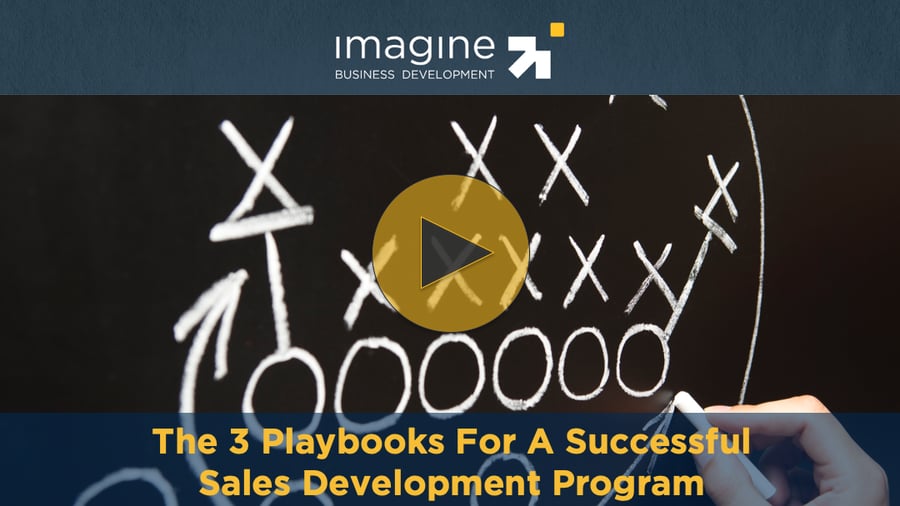 There’s no question that the world of sales has changed. Buyers have more control, access to more information, and increasingly dictate the rules that sellers must play by. Of course, none of this is (or at least should be) news to anyone reading this post. The problem is that sellers (and selling organizations) are increasingly making the wrong adjustments to their new reality.
There’s no question that the world of sales has changed. Buyers have more control, access to more information, and increasingly dictate the rules that sellers must play by. Of course, none of this is (or at least should be) news to anyone reading this post. The problem is that sellers (and selling organizations) are increasingly making the wrong adjustments to their new reality.
The vast majority of sellers have moved into one of two camps:
- They’ve pulled back and ceded the first half to 80% of the process to the buyer’s self-journey. They used flawed research findings to support their action, and justify the approach behind misinterpreted strategies around conversational or inbound marketing.
- They’ve gotten more aggressive by hiring sales development reps by the bushel, sending poorly designed emails at faster and faster rates, and spending more money on paid tactics and poor outbound marketing.
Granted, this is a (slight) oversimplification of the response as there is an expansive spectrum behind the above two extremes.
The mistake that’s being made by sales (and marketing) organizations is they appear to be viewing this new buyer behavior as the change when it is, instead, an effect. Hence most organizations are running the same basic playbook that dominated the late 20th century and are continuing to move further and further out of alignment with how companies and people buy today, thus reinforcing the negative loop they are trying to escape.
The result of this misalignment is higher sales costs, more discounting, greater commoditization, and less predictability. Companies are still growing, but that growth is generated far more by pure force (thus higher costs) and less by greater momentum.
Companies serious about growth must view their customer acquisition strategies and tactics through the complex ecosystem that is the context of today’s customers. Three elements define the core of this new reality:
- Buyers are overwhelmed by information and options. The proliferation of thought leadership has created even more confusion and conflict.
- Status quo, inertia, and “ the good enough factor” represent today’s primary competition. Being better is not enough. What’s more, the distinction between competitive offerings is increasingly ambiguous.
- Consensus decision-making is increasingly driving business purchase decisions across broader sets or prospects. The frequency with which I’m seeing companies with superior value propositions losing sales, because they were only in direct contact with one or two people which is no longer unusual. We advise businesses that to win predictably you must connect with at least three influencers in the smb segment, and closer to five in the mid-market and enterprise segment. The problem is that it’s becoming harder to connect with multiple people at buyer companies and most sales approaches aren’t designed to address this vulnerability.
To win business consistently and to build the momentum that most investments in growth desire, business must adopt two philosophies.
- They must play the right “game” for the right situation.
- They must accept the fact that, initially at least, there is little to nothing they can do that will materially shift buyer intent.

Choosing The Right Game to Play for new Business Development
Selecting the right game for you requires that you determine the broad context of the market you are pursuing. At its simplest, there are situations where you’ll find yourself relative to those in your market:
- Simple - typically exists in markets with strong pre-existing demand for your product, or, at least, category. Making the sales (or the purchase) requires very little change in thought/approach.
- Complex - occurs when there’s either low existing demand and/or high sales prices. In this environment the customers you’re pursuing will need to change how they think about their situation and/or a likely solution.
It really comes down to a simple question to determine the right approach:
Do you need to change the course or speed that a prospect is currently on to generate the sale you desire?
The 3 Motions for Predictable New Business Development
The simple approach is the right one for situations where little to no change is necessary, and the complex one is appropriate for those situations where it is.
In the simple approach, you’ll take a straightforward, linear path to the sale. The simple approach is the dominant approach to sales today. You’re counting on the preexisting intent on the part of your buyer, and to paraphrase what I learned from a golf instructor, your aim is for your solution to interrupt the buyers’ journey.
The complex approach is, well, a bit more complex. It requires three distinct “motions” that operate, for the most part, independently of each other. The motions are:
Motion 1: Initiate
The objective here is to get a conversation. When the goal is to change course and speed, it's best to have a conversation ongoing before you aim to influence.
Motion 2: Nudge
The objective here is to address/overcome "problem blindness" and get the "lay of the land." We aim to do this through the combination of:
- seeding insights and using existing content to support
- highlighting key indicators & symptoms (how do you know you may have this problem)
- discovery - when establishing the conversation, we're asking resonating discovery questions to tie to the problem
Motion 3: Advance
The objective here is to move into a defined sales process that aligns with your strategy.
Viewing business development through this lens enables you to more quickly align with where a buyer is and provide the leadership that will enable you to influence more effectively, create greater distinction vis a vis your competitors, and generate predictability in your customer acquisition efforts.
The motions also serve to align and orchestrate the actions taken by marketing and sales, to generate more momentum and reduce the effort required to win new business.

 Doug Davidoff
Doug Davidoff
